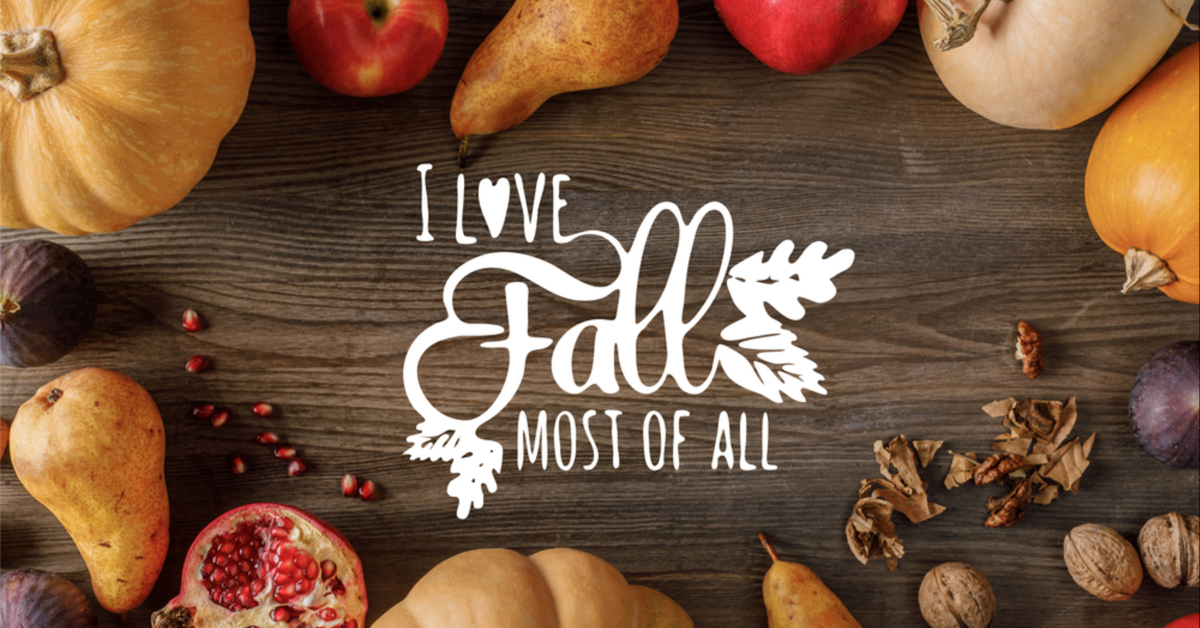
What does it mean to “eat with the seasons?” Erica Mesirov, our resident Food Coach, explains how we naturally benefit from this dietary practice and lists some great options to add to your grocery list this season!
When you eat with the seasons, you eat food that primarily grows during the season you’re currently in. So now that we’ve entered fall, eating with the seasons means eating food that grows during fall. The thought is that foods grow during specific times of the year for a reason. Foods that grow in spring and summer tend to be juicy and hydrating to help the body endure the heat of summer. And foods that grow during fall and winter are warming, helping us survive the winter cold.
Foods that grow during fall, naturally support our bodies as we transition to colder temperatures. Even if you live someplace warm, the weather is still getting cooler and the days are getting shorter. And fall foods help the body go through this change.
Eat with the seasons throughout history
Did you realize that we’re one of the first generations to have such a bevy of foods available year round? People only started canning food around the year 1800. And the refrigerator wasn’t invented until 1834.
But it wasn’t until the 1900s that manufacturers started preserving food for the masses. And those of us alive today don’t think twice about seeing strawberries on store shelves all year. But is this really normal?
The price of modern food preservation practices
Do you think a strawberry in summer is the same as a strawberry in fall? It sure looks the same, right? But nutritiously, it’s very different.
A strawberry that you buy in spring and summer grows naturally. This is assuming that strawberries are native to your specific region. Strawberries are picked and sent to store shelves right before they reach their normal peak freshness.
But that’s not how you get a strawberry in winter.. A strawberry sold in winter must be picked in the spring or summer before it becomes ripe. It sits in a freezer for months. And then it’s chemically ripened right before hitting store shelves.
Does a strawberry that’s been frozen and chemically ripened contain the same nutrition as one that’s picked fresh from the field? Nobody knows exactly. But that’s definitely a concern. And here’s something else to think about…
Eating foods out of season
A strawberry is very cool and hydrating. That’s not what your body needs when it’s cold outside. During winter, your body craves foods that create warmth.
So when you eat out of season, you miss some of the natural benefits of your fruits and vegetables. You don’t need things that are cooling in winter. Your body doesn’t need foods that are warming in summer.
Mother nature has a plan. And the food processing industry goes around this plan. So it’s good to be aware of what grows naturally in your part of the world during any season. Because these foods are growing to balance your body’s current needs.
Eating with the seasons – foods for fall
What foods grow,and are best to eat during fall? Well, that answer somewhat depends on where you live. But in general, the following foods will give your health a boost if you buy them, and consume them in the fall season.
- Asparagus
- Pumpkin
- Avocados
- String Beans
- Apple
- Zucchini
- Cucumber
- Sweet Potato
- Brussels Sprouts
- Persimmons
- Squash
- Pear
- Beets
- Turnips
- Cranberries
This is by no means a complete list. And again, different foods grow in different parts of the world. But this should give you a general idea.
A modern lifestyle balance to eating with the seasons
You know it’s best to eat fresh food. But let’s get real. Modern lives are busy. And it’s difficult to eat without relying at least partially on processed and prepared foods. And most prepared foods contain ingredients that grow year-round.
So this isn’t about all or nothing. It’s about balance. And an ideal way to eat is to include a good amount of fresh foods that grows in-season.
How do you achieve this?
Go through the periphery of the supermarket first. That’s where you’ll find all the fresh foods. The processed foods are all in the center aisles. And if you’re not sure what’s in season, look for the fruits and vegetables that are on sale. That’s a good hint.
Better yet, visit your local farmer’s market. Everything you’ll find there is in-season. And if you want to save money, go in the final hour or two when things tend to be more discounted. Most growers would rather sell at a discount then pack their produce back up to go home.
It’s OK to include some processed foods when you eat with the seasons. But remember that half your plate at most meals should include fresh foods that are in-season. That’s a great way to create balance.
Do you make it a practice to eat with the seasons already? Or are you curious to start including more seasonal foods in your meal plan? Let us know in the comments!
